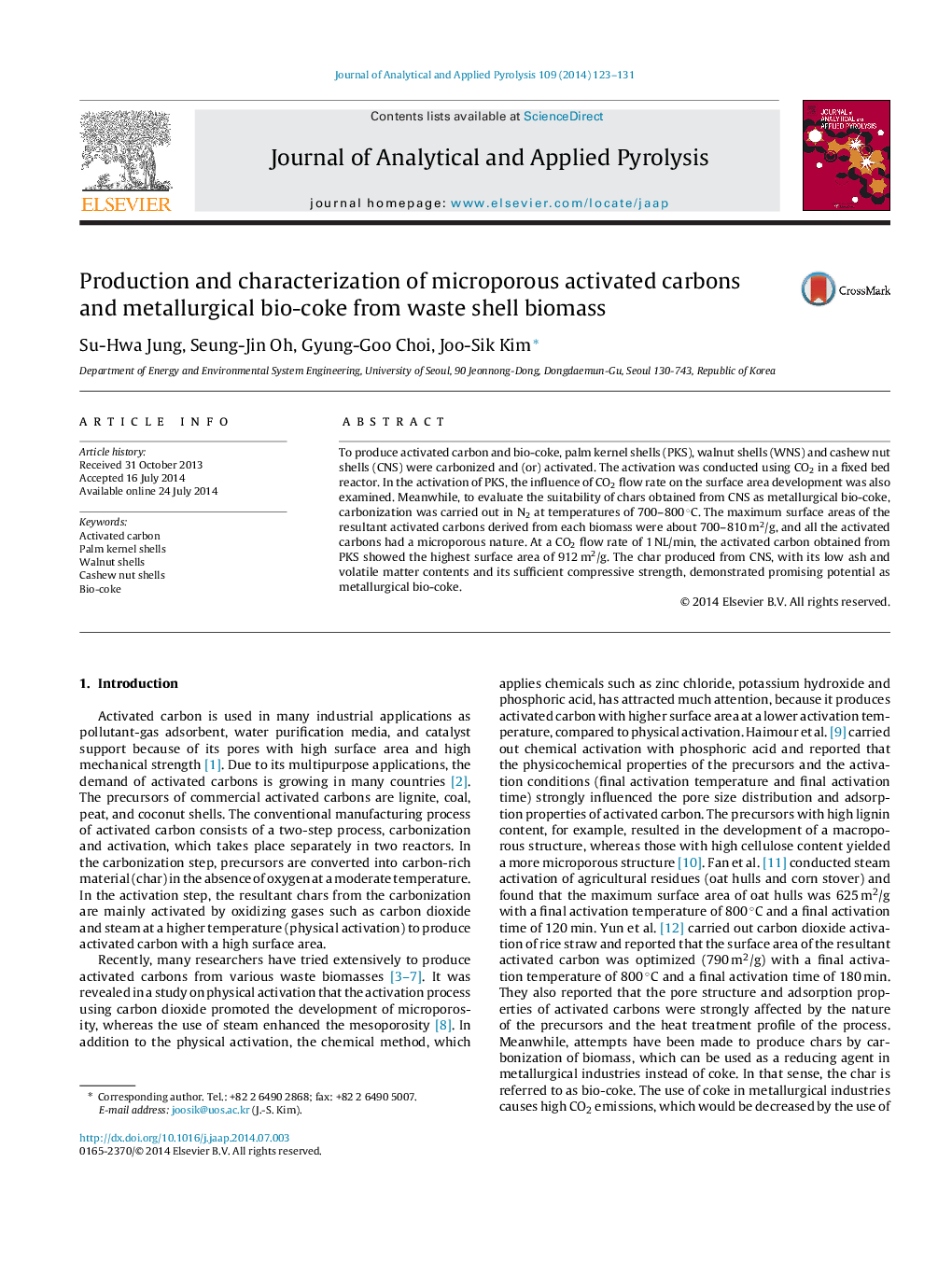| Article ID | Journal | Published Year | Pages | File Type |
|---|---|---|---|---|
| 7606898 | Journal of Analytical and Applied Pyrolysis | 2014 | 9 Pages |
Abstract
To produce activated carbon and bio-coke, palm kernel shells (PKS), walnut shells (WNS) and cashew nut shells (CNS) were carbonized and (or) activated. The activation was conducted using CO2 in a fixed bed reactor. In the activation of PKS, the influence of CO2 flow rate on the surface area development was also examined. Meanwhile, to evaluate the suitability of chars obtained from CNS as metallurgical bio-coke, carbonization was carried out in N2 at temperatures of 700-800 °C. The maximum surface areas of the resultant activated carbons derived from each biomass were about 700-810 m2/g, and all the activated carbons had a microporous nature. At a CO2 flow rate of 1 NL/min, the activated carbon obtained from PKS showed the highest surface area of 912 m2/g. The char produced from CNS, with its low ash and volatile matter contents and its sufficient compressive strength, demonstrated promising potential as metallurgical bio-coke.
Related Topics
Physical Sciences and Engineering
Chemistry
Analytical Chemistry
Authors
Su-Hwa Jung, Seung-Jin Oh, Gyung-Goo Choi, Joo-Sik Kim,
